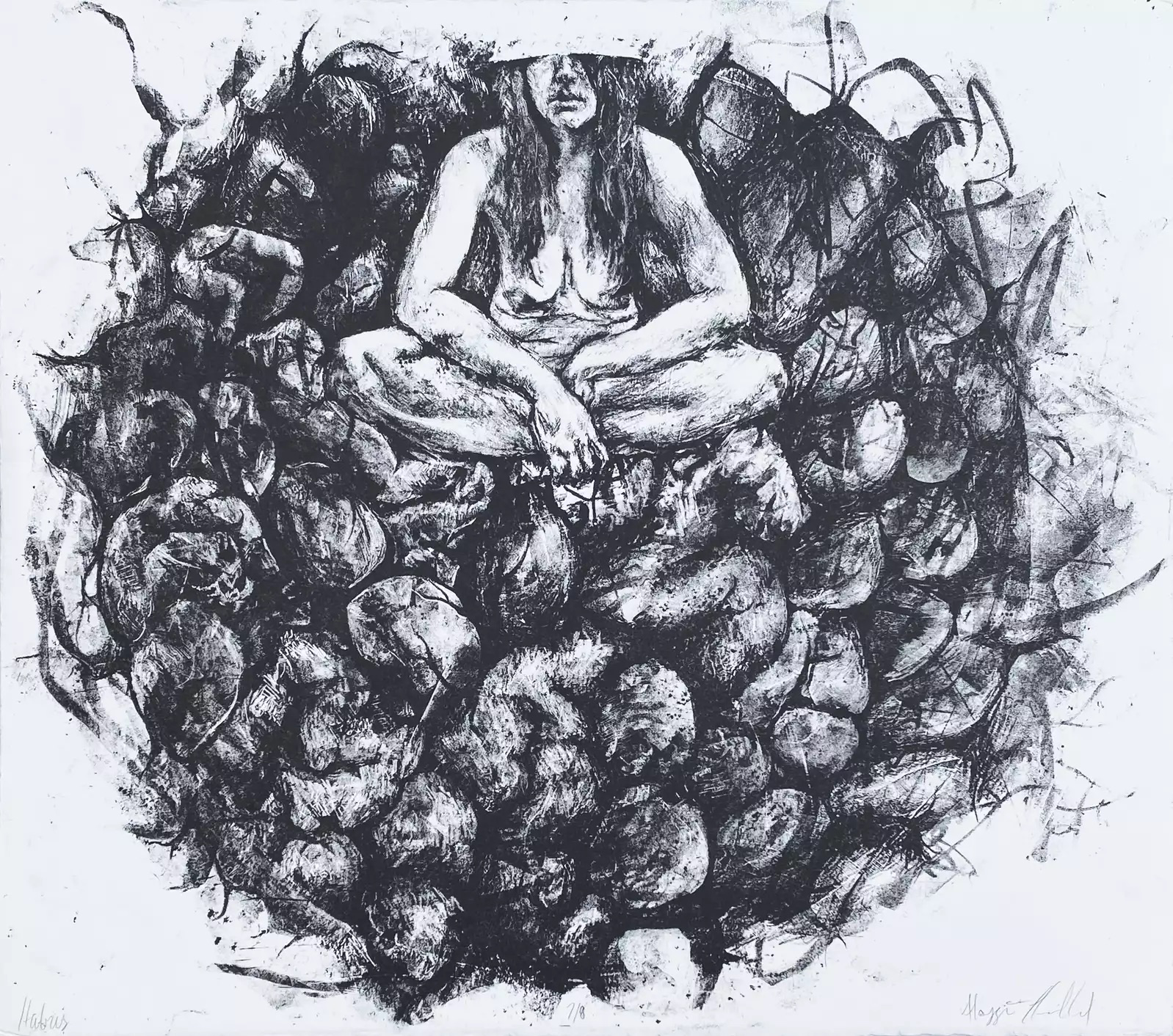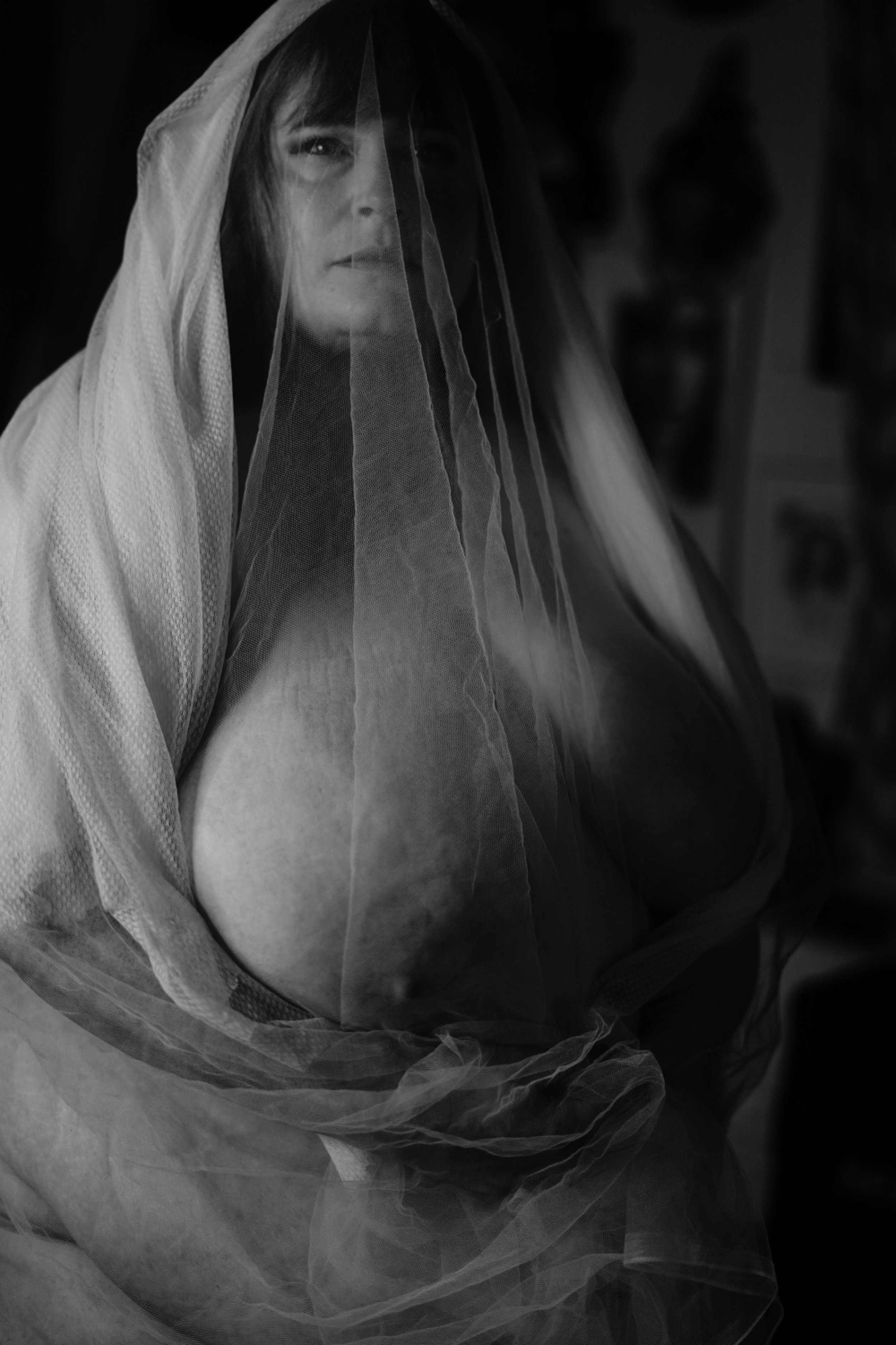Miss Universe: New Gallery. New Art. Eternal Theme.
Miss Universe, an exploration of the feminine experience through a range of print and photographic media, is not only a stunning triumph for the diverse group of artists on exhibit, it also represents the public debut of a new space and a new attitude in Crown Heights.
“We want Julie Seabrook Gallery to be a community gallery, but at the same time we want to showcase the best art from emerging and established artists. We want out shows to be engaging experiences for both the artists and the art-loving public,” said Nicole Abe Titus, the gallery’s ambitious young owner.
The inaugural show does just that. It includes both local and globally significant artists all bringing their talent, skills and incandescence to the task of defining what it means to be a woman in a post-modern world, touching on themes of beauty, strength, sexuality, desire, frustration and need.
Among the highlights are a pair of pieces from deceased artists, American painter and feminist artist Nancy Spero and painter, printmaker and weaver Emma Amos.
Spero’s 1992 piece We Are Pro Choice depicts five figures all seeming to joyously express the piece’s titular statment. The piece, a silkscreen rendering on pink Japanese laid paper, ably expresses the diversity of participants in the pro-choice movement.
The Amos piece, a 1980 color etching and aquatint called Pool Lady, expresses the strength and determination of a Black woman posing, fist on hip, in a bathing suit. Her strength is conveyed not by her dress or her Rubenesque figure, but in the skeptical almost cynical, look of disapproval on her face, especially in her eyes.
The title of the show is drawn from work by New York artist Anna Friemoth. Two pieces in her Miss America series are part of the show. They portray the universal power of women by placing their image afloat in a dark blue and black background reminiscent of outer space.
Also taking part in the inaugural show at the newly-renovated JSG space are artists Maggie Holland, Chris Carr, Gabriele De Cos, Lewinale Havette, ABE, Lane Sell and Adam Pitt,
Julia Seabrook Gallery, a division of Abe Art LLC, is owned by Nicole Abe Titus. JSG offers an approachable, nonaligned threshold to the art world for promising emerging artists and a robust growth catalyst for established talent.
Miss Universe
March 2, 6-9 PM
Julia Seabrook Gallery, 660 Franklin Ave., Brooklyn
Contact: @juliaseabrookgallery, info@abeartllc.com
We Are Pro Choice, 1992, screenprint in colors, on pink Japanese laid paper, 18 1/2 × 30 × 1/2 in | 47 × 76.2 × 1.3 cm
Maggie Holland: Raised among goats, sheep, cowboys and cedar trees in Rosebud-Lott, Texas, Holland fell in love with print making while attending Baylor University. She moved to Brooklun in 2016. “I moved to New York in 2016 because I wanted to be openly bi without the social pressures of conservative baptists. I began making art regularly again in late 2020. I returned to printmaking in the spring of 2021 when I joined Shoestring Press.”
Miss Universe X, 2021, Archival pigment print, 44 × 57 in | 111.8 × 144.8 cm, Edition 1/3
Anna Friemoth: Born and raised in New York, Anna uses photography to explore possible ways of seeing and understanding, in order to reimagine conventional tropes of language and image. She received her B.F.A. from Maryland Institute College of Art and Central Saint Martins. Her work has been published internationally in France, South Korea, Turkey, China, London and New York in BLINK Magazine, Beautiful/Decay, Feature Shoot, MATTE Magazine, and Flavorwire.
Asstyn I, 2023, digital print, 28 × 18 1/2 in | 71.1 × 47 cm
Chris Carr: Carr is a Brooklyn-based multidisciplinary conceptual artist, photographer, emcee, educator and instrumentalist. “I am intrigued by the history of cultural expression, power relationships, semiotics, post-modern sociological theory, and interpersonal dynamics. My work takes on themes of normalcy vs. deviancy, alternative culture, social inequality, and the metaphysically interstellar.”
We Are Pro Choice, 1992, Screenprint in colors, on pink Japanese laid paper, the full sheet. 18 1/2 × 30 × 1/2 in | 47 × 76.2 × 1.3 cm
Nancy Spero: An American painter and feminist artist, Spero’s expressive work is characterized by its figurative interpretation of sociopolitical and cultural issues, often directly tackling racism, violence, and sexism in contemporary space. “I've always sought to express a tension in form and meaning in order to achieve a veracity,” she said. (DECEASED)
Full of Grace II, 2022, Pigment print on aluminum, 4 × 24 in | 61 × 61 cm
Gabriele de Cos: A Spanish-Colombian, multimedia artist based in New York City, de Cos’ art practice is influenced by her extensive work as a fashion stylist, costume designer, photographer, and set designer as well as her newly developed interests in art and technology. Full of Grace, he latest project, is an exploration of intimacy, youth culture, and gender fluidity from a contemporary lens.
IFire, 2022, Pencils pastel ink acrylic carbon paint monoprint on smooth rag paper, 40 × 30 × 1/2 in | 101.6 × 76.2 × 1.3 cm
Lewinale Havette: “Intimate but universal in its relevance, my artwork deals primarily with aspects of female identity, including gender and power dynamics, race, religion, and sexuality. It debunks the historical power structure systems that once surrounded me.” Havette’s work has been featured in exhibitions in museums and galleries in the United States and Europe.
Strong Black Woman (1 through 4), 2021, Digital Print on luster paper, 24 × 18 in | 61 × 45.7 cm
ABE: Growing up in foster care, ABE gravitated towards art at an early age as a means to escape from harsh realities. Her painting style can be described as abstract expressionism, while her overall art style is conceptual. There are sexual allusions in her work as well as references to the imbalances of power and money in society. In this work, her modeling explores questions of femininity, strength and struggle.
loor Pronoun, 2023, silkscreen and paint on tabletop, 30 x 40 x 3 in
Lane Sell: A St. Thomian artist living and working in Crown Heights, Sell is a printmaker by trade, his work extends into installation, assemblage, sculpture, and performance. He is the founder and Master Printer of Shoestring Press, a community printshop and artist space on Classon Avenue which has served Brooklyn artists for the past decade.
Pool Lady, 1980, Color etching and Aquatint, 23 1/4 × 21 1/4 in
Emma Amos: Painter, printmaker, and weaver Emma Amos was born in 1937 and grew up in Atlanta, Georgia, where her parents owned a drugstore. “Images come to me of words like sass and back talk that describe the attitudes of people who actively resisted oppression. My work has often taken shots at assumptions about skin color and the privileges of power and of whiteness.” (DECEASED)
Asstyn I, 2023, digital print, 28 × 18 1/2 in | 71.1 × 47 cm
Adam Pitt: A woodcut printmaker who spent decades navigating life as a corporate manager for a Fortune 500 company, Pitt worked simultaneously as an undercover artist. Pitt works in two distinct series; Nudes and Korporate Culture. Both series observe the muse, becoming a narrative for his own work-life dichotomy.










